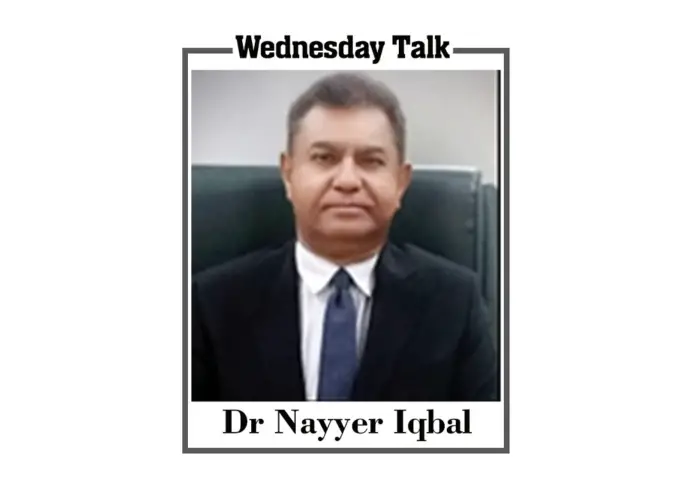Dr. Henry Kissinger has been stunning the world all-over his 6-decade long career, in diplomacy and academics. Through his latest work ‘Leadership’, he has proven that even at the age of almost 100 years, he has not lost his ability to ‘rock’ the world. This book, the 19th in sequence, is basically a collection of case-studies of six 20th century leaders who were confronted with extremely complex situations. These extraordinary visionaries were eventually able to not only overcome their national dilemmas but also steered their nations towards a new direction successfully. They crafted their own respective strategies to come-out from the ‘quagmires’ wherein their nations were caught-up: Konrad Adenauer adopted the Strategy of ‘Humility’, Charles de Gaulle of ‘Will’, Richard Nixon of ‘Equilibrium’, Anwar Sadat of ‘Transcendence’, Lee Kaun Yew of ‘Excellence’ and Margret Thatcher of ‘Conviction’.
Dr. Kissinger presents thread-bare analysis of the enigmas and intricacies faced by these selected leaders and what they strategized and implemented. Obviously, the political leaders cannot manage their countries like CEO’s of Companies where no human emotions are involved and only cold logic based upon certain figure-work is applied. In case of national leaders numerous aspects like history, nature and feelings of the general public are to be kept in consideration before taking decisions; undoubtedly a delicate and sensitive task. The handling of the subject demonstrates that Dr. Henry Kissinger was the most suitable political scientist to write on it. His intellectual stature apart; Dr. Kissinger’s personal involvement in the developments discussed here-in; and keen observations have added value and meaningfulness to the book.
The book starts with the case of Konrad Adenauer, the first post-Second World War Chancellor of Germany (1949-63). Germany had been completely defeated ‘together with its total loss of moral and international legitimacy’ and the ‘disintegration of the German civil structure’. The author personally witnessed the German state in paralysis being part of those US troops which took-over Berlin after the collapse of Nazi power. Adenauer being a rationalist knew clearly that Germany was not in a position to raise objections before the ‘Allies’ and the only way-out is to concede whatever was being asked. He adopted a policy ‘both humble and daring : to confess German inequities; accept the penalties of defeat and impotence, including the partition of his country; allow the dismantling of its industrial base as war reparations; and seek through submission to build a new European structure within which Germany could become a trusted partner’. He understood that to keep the USSR away from West Germany he needed active US and European support, therefore with a highly refined diplomacy and wise initiatives he was able to make his country part of the ‘club’ against whom his nation had fought a horrible 5-year long war. By securing peace he could re-establish the industrial structure and military power of his country once again. His successors, by and large, followed his policy and when in 1991the USSR crumbled, Germany was unified. The short-term ‘humility’ ensured long-term ‘success’ and ‘rehabilitation’.
The second chapter deals with the French President Charles de Gaulle (1959-69)’s strategy to place France at a respectable position in the post-war arrangement of the world. He believed in the Roman maxim that ‘fortune favors the brave’ and his policies reflected the same. After the war, he insisted that ‘France could play a role in the future of Europe only if it restored its political soul’ however the country’s political system was too weak to achieve that objective: hence in disgust he detached himself from it by resigning as the head of the Provisional government. Twelve years later, in 1958, he was called back to steer the country out of a ‘piled-up stock’ of problems. He took very courageous rather ruthless decisions like ‘amputation’ of ‘Algeria from the body politic of France’ and introducing a new constitution which, according to him, was required by the circumstances and suited the French temperament. Kissinger calls De Gaulle’s statesmanship as ‘singular’ and his life as a ‘case-study in how great leaders can master circumstances and forge history’.
Then comes the US President Richard Nixon (1969-74). Dr. Henry Kissinger has painted him as a leader ‘who reshaped a failing world order at the height of the Cold War’. By 20 January, 1969, the date when Richard Nixon entered the White House, the Soviet Union was apprehended to have attained strategic superiority, ‘raising concerns about sudden doomsday attacks and an extended period of political blackmail’. As part of his well thought-out ‘Strategy of Equilibrium’ Nixon ‘ended American involvement in Vietnam; established the United States as the dominant external power in the Middle East; and imposed a triangular dynamic on the previously bipolar Cold War through the opening to China, ultimately putting the Soviet Union at a decisive strategic disadvantage’. The ‘equilibrium’ created by Nixon saved the world from a direct clash between the two super powers right up to disintegration of the USSR in 1991. In this chapter, Dr. Henry Kissinger has also discussed in detail the East Pakistan crisis of 1971 leading to Indo-Pakistan War, creation of Bangladesh and the US response to these developments.
President Anwar Sadat of Egypt (1970-81) has also been rated very high due to his ‘bold vision of peace, unprecedented in its conception and daring in its execution’. His strategy prioritized ‘national sovereignty and alignment with the US over the pan-Arab nationalism and non-alignment then sweeping the Arab and Islamic world’. Kissinger also regrets that Sadat’s successors ‘adopted only the practical rather than the visionary aspects of his efforts’ to negotiate peace with Israel and uplift his country. He also charges the post-Sadat leadership that they ‘did not display the single-minded courage with which he had infused them’.
At number 5, Dr. Henry Kissinger has discussed Lee Kuan Yew, the first Prime Minister of independent Singapore (1959-90) and his ‘Strategy of Excellence’. As a leader, he inherited a territory with ‘some 224 square miles at low tide’ which lacked the ‘most basic natural resources, including sufficient drinking water’. Singapore’s population of 1.9 million, by international criteria, was ‘minuscule’ and was ethnically segmented always at loggerheads with each other. Within a short span of two decades, Lee transformed this hopeless ‘malarial’ island into ‘Asia’s wealthiest country on a per capita basis and the de-facto commercial center of Southeast Asia’. Kissinger has appreciated the policies and implementation of this ‘compact, and radiating energy’ leader lavishly.
Finally, the book reaches to chapter-6 which has been assigned to Prime Minister Margaret Thatcher of the Britain (1979-90) and her ‘Strategy of Conviction’. The author has highlighted that the ‘Iron Lady’ worked hard to ‘cast off the shackles that had limited her predecessors—particularly the nostalgia for lost glories and the abiding regret of national decline’. In result of her leadership, the Britain emerged as a newly confident nation with entirely fresh image. Kissinger has stressed that it was not the originality of her policy but its implementation which makes Margaret Thatcher remarkable. The Britain faced a number of domestic and international issues, when she took-over, but she sorted them out one by one through her sheer ‘conviction’ by the end of her period.
The last word: one can only comment that just like Dr. Henry Kissinger’s previous works, it is a worth-reading book. Anybody interested in the post WW-II political developments must go through it. Needless to say that like always Kissinger is captivatingly interesting.







